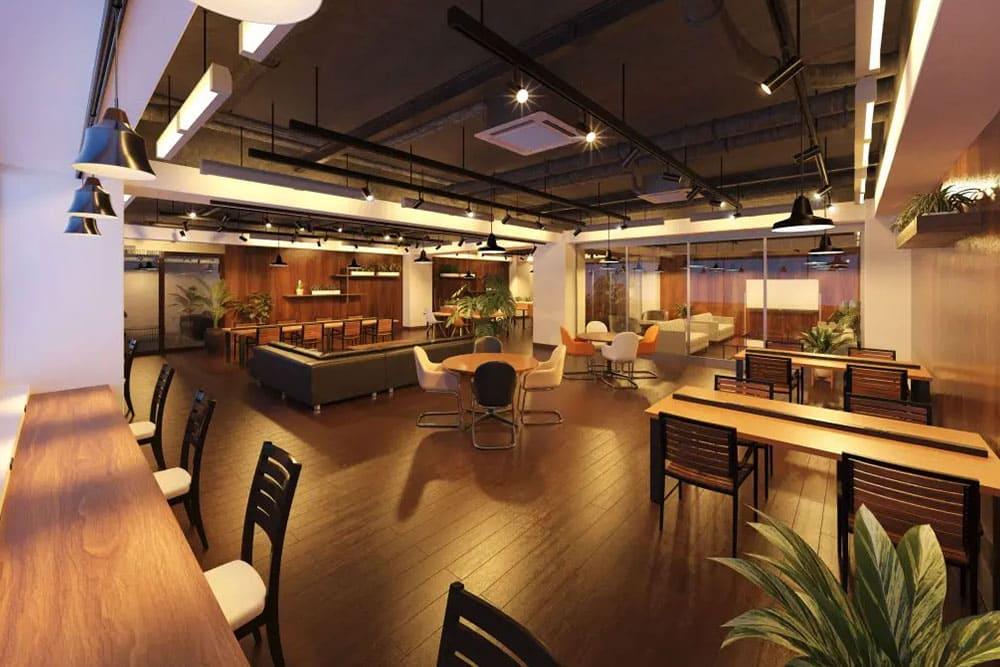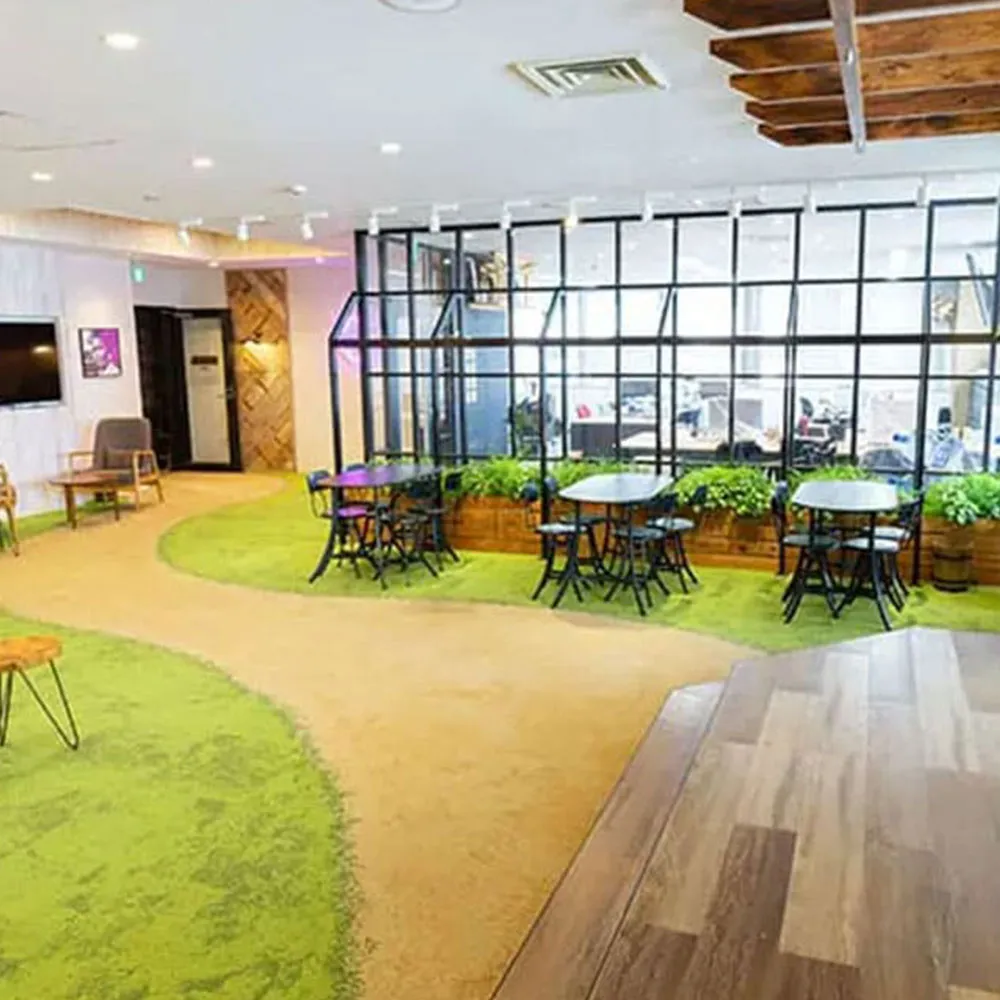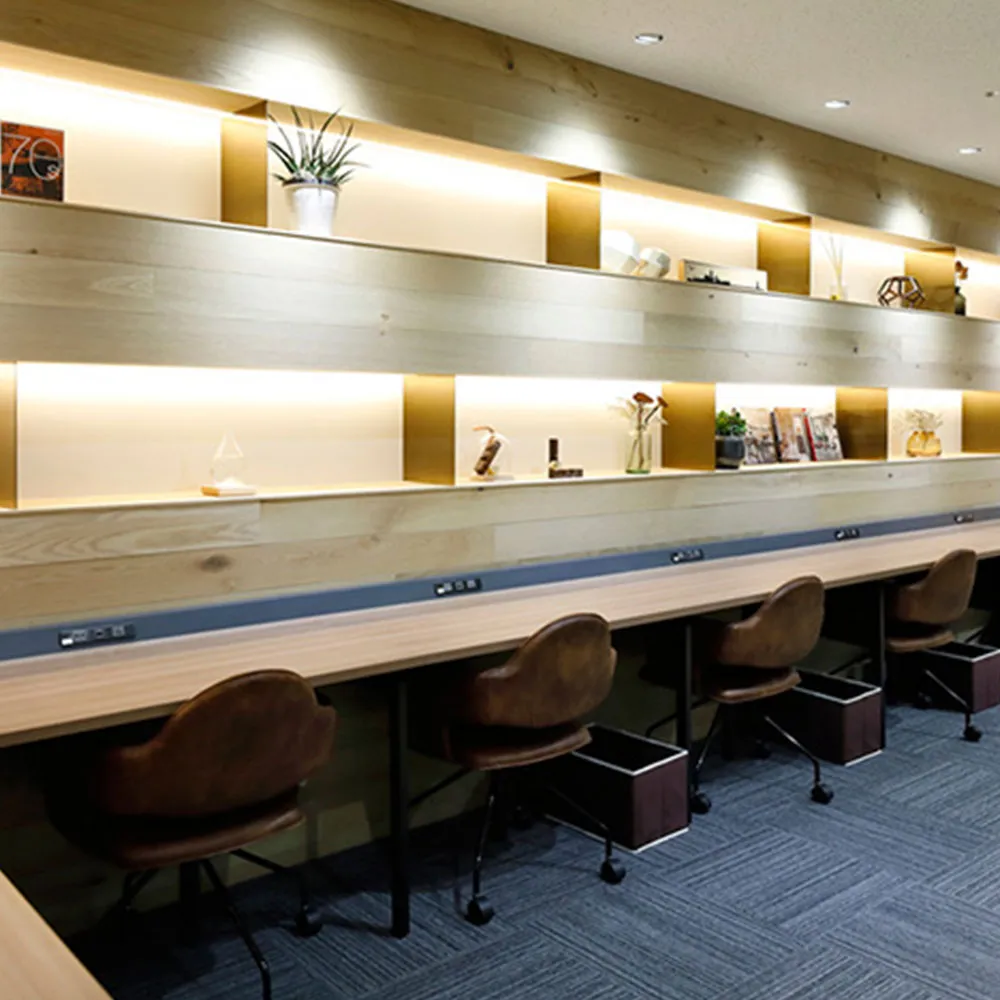What is a coworking space? From advantages and disadvantages to how to choose
Update:2025/9/10

A coworking space is a shared workspace where individuals work independently while sharing facilities such as desks, chairs, and meeting rooms. The facility provides a free-address workspace format, allowing users to work wherever they prefer. Its popularity extends beyond freelancers and entrepreneurs to include corporate employees working remotely. It offers hourly or monthly usage options, along with business infrastructure like Wi-Fi and printers, as well as beverage services.
In recent years, demand for coworking spaces has grown, attracting not only freelancers and entrepreneurs but also corporate employees working remotely. However, while many have heard the term “coworking space,” few may know exactly what they offer or how they function.
As a “third place” that is neither the workplace nor home, coworking spaces are now found in various locations. This article explains the basics of coworking spaces, their advantages and disadvantages, how to choose one, and the differences from similar facilities like “shared offices.” If you are considering using a coworking space or shared office, please use this as a reference.
Contents
- 1 What is a coworking space?
- 2 Advantages and disadvantages of coworking space
- 2.1 Advantage 1: A good environment for concentrating on work.
- 2.2 Advantage 2: Lower initial cost
- 2.3 Advantage 3: Potential for increased business opportunities.
- 2.4 Disadvantage 1: May be difficult to concentrate on certain days of the week and times of the day.
- 2.5 Demerit 2: Increased security risks
- 3 3 ways to choose a coworking space
- 4 How to use shared offices and coworking spaces
- 5 About Serviced Offices
- 6 Summary
【Tokyo】Search for inexpensive private
serviced offices
Registration available, close to station,
free internet, free meeting rooms,
office furniture available
What is a coworking space?
Coworking space is a general term for a service where individuals or companies share a single space or facility. The facility provides free-address style workspaces, basically allowing you to work wherever you want. Many coworking spaces are very open and are similar to a café.
The characteristics of a coworking space (Co-Working Space) are very clear when you consider the meaning of the word. The “Co” in coworking refers to “co-creation. This means that a coworking space is characterized by its emphasis on co-creation and community building with the people who gather there.
There are generally two types of fee plans: monthly and drop-in. Some facilities have restrictions, such as “drop-in use only on weekdays.
Basic facilities and functions of a coworking space
The following is a sample of the basic facilities and functions of a coworking space.
・Wi-Fi A Wi-Fi environment is essential when working with a computer or smartphone. While speed and stability vary from facility to facility, it is unlikely that the Internet environment is so bad that it interferes with your work. ・Free drinks Some facilities provide free drinks that users can use free of charge. Coffee, tea, and other beverages are available, and some facilities even have a bar attached, providing an opportunity for users to interact with each other. ・Corporate Registration Many people, especially sole proprietors, may not want to use their home address on business cards or other documents for privacy reasons. If the facility allows corporate registration using the address of the coworking space, you can use the address of the coworking space. ・Kitchens Larger coworking spaces may have a kitchen available. For example, if you want to hold a party using food brought in by users, you do not need to rent a new space with a kitchen attached. |
Shared office is a general term for offices where a single facility or space can be shared by individuals or multiple companies. In a broad sense, the coworking space mentioned above is also included in a shared office.
In addition to free-address seating, fixed seating for one person, separated by partitions, is also available. The fee system is mainly based on monthly plans, but some facilities are available on a drop-in basis. Some shared offices offer monthly contracts for fixed seating, allowing you to keep your equipment and documents at each seat at your disposal.
The differences between coworking spaces and shared offices are summarized below.
| Features | Functions | Pricing | |
| Coworking space | ・Office space shared by several people (a kind of shared office) ・Emphasis on community building and co-creation | ・Use of workspace ・Shared use of office equipment (desks, wired/wireless LAN environment, multifunction printer/whiteboard, etc.) ・Use of meeting rooms ・Use of kitchen space ・Telephone and fax service when you are not in the office ・Mail forwarding ・Corporate registration(Some services may be paid options) | ・Mostly drop-in courses available on an hourly or daily basis (some facilities also offer monthly usage) ・Market rates range from 500 yen per hour to 2,000 yen per day.*Market rates for drop-in services vary depending on the region, location, and size of the facility. |
| Shared office | ・Multiple people share office space | ・Use of workspace ・Shared use of office equipment (desks, wired and wireless LAN environment, multifunction printer/whiteboard, etc.) ・Use of meeting rooms ・Telephone and fax service when you are not in the office ・Mail forwarding ・Corporate registration(Some services may be optional for a fee) | ・Monthly courses are the mainstream (some facilities offer drop-in services). ・Monthly course fees range from 10,000 yen to 60,000 yen for a fixed seat, and from 5,000 yen to 30,000 yen for a free seat. *Market rates for monthly plans vary by region, facility, and scale. |
Advantages and disadvantages of coworking space
One of the reasons/backgrounds for the increasing use of coworking spaces is the promotion of work style reform.
As work styles have become more diverse, including remote work and telework, it is now common to see people working not only in offices but also in various other locations. On the other hand, when working at home, it is difficult to concentrate and it is not uncommon for work efficiency to drop. Demand for coworking spaces has been increasing due to people wanting an environment where they can concentrate as much as possible and wanting to separate their home from their workplace.
Here we explain three advantages and two disadvantages of coworking spaces.
Advantage 1: A good environment for concentrating on work.
While coworking spaces provide a café-like atmosphere, users are concentrating on their work/study. Even if the space is not completely silent, it will be easier to concentrate on your work because you will be less likely to be bothered by the voices of those around you, as you would in a café.
Also, when working alone at home, it is not uncommon for people to get lazy because they cannot switch on and off properly. By having people around you who are working/studying, like in a coworking space, you can maintain a sense of urgency and focus on your work.
Advantage 2: Lower initial cost
While coworking space fees vary from facility to facility, the initial cost will be much lower than using a typical rented office.
For example, if you want to use a room in an apartment as your workspace, you will have to pay rent and communication facility fees. Depending on the location, this can cost several hundred thousand yen, which can be a large burden. However, with a coworking space, you only need to pay a monthly fee to secure a work space, and the initial cost is often limited to an admission fee plus the first month’s usage fee, making it possible to reduce the financial burden.
Advantage 3: Potential for increased business opportunities.
Another major advantage of coworking spaces is the increase in business opportunities, as they are used by a variety of people, including company employees and entrepreneurs who are engaged in side businesses.
By interacting not only with people in the same industry, but also with people from other industries with which you have no prior relationship, you can broaden your horizons through the exchange of information. In addition, in many cases, new encounters can be made, such as when people sometimes work together.
Disadvantage 1: May be difficult to concentrate on certain days of the week and times of the day.
While the advantage of coworking spaces is that you can concentrate, depending on the day of the week and time of day, it may be more difficult to concentrate.
Different facilities have different times of the day and week when they are more crowded, and if the space is not full, but there are a lot of people, there is a possibility that the conversation will be louder. If you have some idea of the days and times you plan to use the facility, we recommend that you visit during the days and times you plan to use the facility to get a better idea of how crowded it will be.
Demerit 2: Increased security risks
One of the disadvantages of coworking spaces is the increased security risk. Because coworking spaces are open spaces with many people coming and going, there is a non-zero chance that a computer could be stolen or lost. There is also the risk of people peeping at your computer screen if you move around with it on.
When using a coworking space, be sure to pay more attention to security.
【Tokyo】Search for inexpensive private
serviced offices
Registration available, close to station,
free internet, free meeting rooms,
office furniture available
3 ways to choose a coworking space
Coworking spaces can be used not only for meetings, but also for holding events. If you want to use a coworking space in a variety of ways as described above, it is important to know how to choose a coworking space so that you can make the most of it.
Here are three ways to choose a coworking space.
Fee system
The first way to choose is based on the fee system. While the fee system basically consists of two types of plans, “monthly” and “drop-in,” some facilities divide the fixed fee system into smaller plans, such as “weekend/holiday-only plans. If you find a fee plan that fits your frequency of use, you do not have to pay more than necessary.
Avoid choosing a coworking space based on price alone. If you find a coworking space that is extremely inexpensive, you may find that the facilities are inadequate.
Location
The second way to choose is by location. If the coworking space is located in a place that is not easily accessible from your home, it will take you longer to get there and you will be burdened with travel. If you choose a location that is as close to your home as possible, you will be able to work without any extra burden.
Location is also important when registering a corporation. Listing a location with a strong land brand on your business card will help give your business partners and others a sense of security.
Atmosphere and user base
The third way to choose a coworking space is to choose one based on its atmosphere and user base. The demographics of each coworking space will vary, with some having many young people and others having many people in their 40s or older. If you are interested in socializing with other users, be sure to check the atmosphere and user demographics during your visit.
Some facilities are used more like cafes than others. If you are looking for an environment where you want to concentrate, we recommend choosing a coworking space with as quiet an atmosphere as possible.
As mentioned earlier, there is no clear distinction between shared offices and coworking spaces in the industry, as there are many overlapping areas in terms of purpose of use and functionality. However, in the case of coworking spaces, the clientele that uses them is characterized by their suitability for community building and collaboration.
Thus, for example, if you want to concentrate on daily production or development work, you can use a shared office with a monthly contract and sometimes jump into a coworking space as a drop-in.
About Serviced Offices
A serviced office is an office style in which a portion of a floor is rented. While shared offices are suitable for sole proprietors, freelancers, and start-ups, serviced offices are suitable for organizations or companies of 10 people or less.
Because serviced offices are private rooms, you will not be bothered by the noise and bustling voices around you as you would be when using a coworking space. In addition, if you want to co-create with your colleagues, you can hold meetings in the reception room or conference room.
You can also place your work equipment, making it a good option for companies with many desktop computers and work documents. For more information on the convenience of renting an office, check out the following articles.
Availability of “meeting rooms” is important for serviced offices!
If you are considering using a serviced office, check whether it has a meeting room.
If you have to deal with many visitors for meetings or business negotiations, you will have to hold meetings or business negotiations in a shared space in a serviced office without a meeting room. From the standpoint of confidentiality, conducting meetings and business negotiations in a shared space is risky. This can lower your credibility with visitors, so the availability of a meeting room is an important factor in choosing a serviced office.
Summary
In this article, we have provided an overview of coworking spaces, focusing on their merits and demerits.
Since coworking spaces have various merits and demerits, it is important to understand each before deciding which facility to use. We recommend that you make a list of several facilities and actually visit them to check the atmosphere.
If you choose to use a serviced office, consider Tensho Office. Not only is it close to the station and well-equipped, but it also offers a wide range of features for those who want to set up an office, such as free use of meeting rooms.







